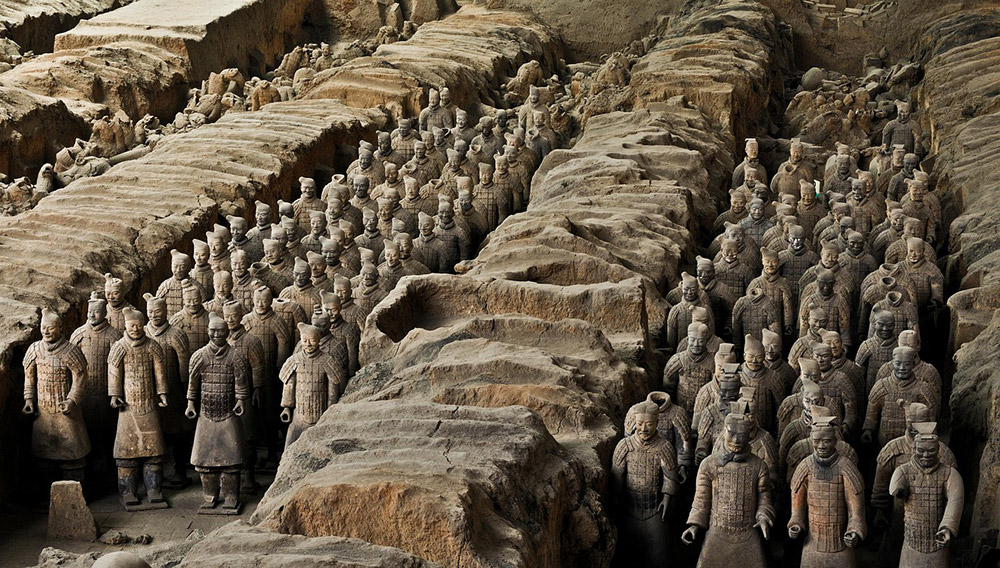Terracotta army
the tomb of Qin Shi Huang
Terracotta Army The tomb of Qin Shi Huang dated from 246–206 BC, discovered in 1974. The Terracotta Army is a fascinating story about an accidental excavation that took place in Xi’an Shaanxi Province China. The story begins with a local farmer named Yang Zhifa and his brothers digging a well in a rural area called Lintong.
The significance of the Terracotta Army was created to protect the tomb of Qin Shi Huang, which was built to replicate the empire. It is estimated that around 8,000 life-sized Terracotta Army soldiers along with chariots horses and other statues were meticulously crafted by skilled craftsmen in the past. Qin Shihuang, originally named Yingzheng was the first emperor of unified China. He ascended the throne at the age of 13 in 246 BC. Through political alliances creative strategy and military conquest he unified the warring states into a single empire in 221 BC and assumed the title of First Emperor.
These warriors were placed in battle formation to protect the tomb in a large underground pit of the emperor protecting it from potential threats. It is believed that these Terracotta Army soldiers will be resurrected in the afterlife and serve the emperor. The variety of military forces in the Qin Shi Huang dynasty which dates back more than 2,000 years to ancient China. The first emperor of China Qin Shi Huang wished to protect and maintain his power and rule even in the afterlife. As a powerful ruler Qin Shi Huang had the vision of creating a magnificent mausoleum that would last a lifetime.
Yingzheng emperor He ascended the throne at the age of 13 in 246 BC. Through political alliances creative strategy and military conquest he unified the warring states into a single empire in 221 BC and assumed the title of First Emperor. His reign marked a major advance in administrative efficiency and cultural unity. He standardized units of measurement currency and writing systems to facilitate communication and trade throughout the empire. Despite his many achievements Qin Shihuang’s rule was marked by oppression and authoritarianism. He burned many books and buried scholars alive to stifle intellectual debate. His death in 210 BC led to the rapid downfall of the Qin dynasty. Due to the rebellion and the country was in chaos until the Han Dynasty came to power.
The complex structure and variety of troops such as standing and kneeling archers, cavalry chariots and infantry the strategic formations in Pit 2 demonstrate the advanced military tactics used by the Qin Dynasty. Pit 2 although smaller than Pit 1 has a more diverse army revealing the ancient military strategies and mysteries of ancient military formations. Consisting of four units kneeling and standing archers in battle formation. The second unit consisted of chariots demonstrating the unpredictable tactics of the Qin Dynasty with chariots. The third unit consisted of a mixed force of infantry and soldiers standing in a square demonstrating the capabilities of the Qin army. The final unit consisted of a large number of armed soldiers. Excavation and restoration work is still ongoing at the pit.
These statues reveal details about the military hierarchy weapons and armour used at the time and initiated the construction of the Great Wall of China to protect the country from invaders from the north. The finds also provide a unique glimpse into the advances in sculptural art in ancient China. The tombs are located both inside and outside the main tomb walls. Many exquisite artifacts have been found including terracotta animals Qin Shi Huang's chariot and pottery. The Terracotta Army provides valuable insight into the culture and technology of the Qin Dynasty. The magnificent tombs known as the Emperor's Tomb








